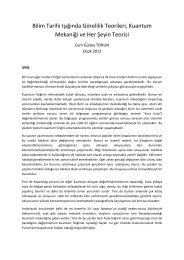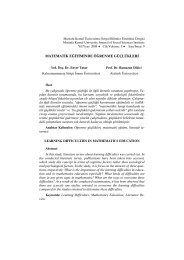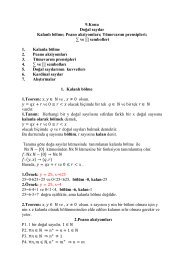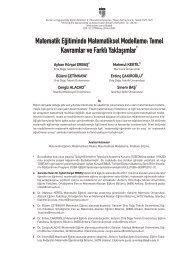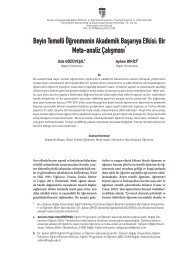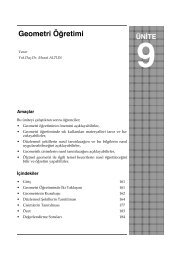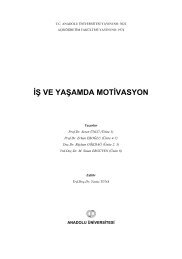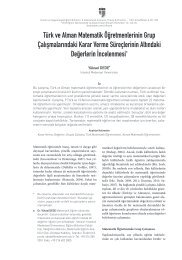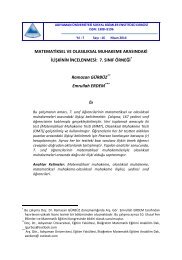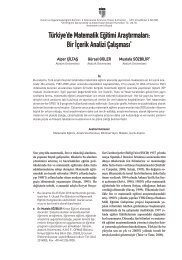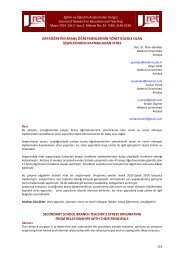Ufuk-U_niversitesi-SBE-Dergisi-S-ayı-5-kopya
Ufuk-U_niversitesi-SBE-Dergisi-S-ayı-5-kopya
Ufuk-U_niversitesi-SBE-Dergisi-S-ayı-5-kopya
Create successful ePaper yourself
Turn your PDF publications into a flip-book with our unique Google optimized e-Paper software.
28 had more positive attitudes than students aged between 17 and 19 (Koydemir-Özden &Erel, 2010).However, in all these studies, variables were taken separately, thus there is noinformation about the role of confounding variables in the relationship of gender and attitudetowards help seeking.In the literature, there is no study that directly examines the relationship betweengender, age, faculty and attitudes toward help seeking. To fill these gaps in the help-seekingliterature and to enhance the knowledge about the direct relationship between gender andattitudes toward help seeking this study will be conducted. Thus, research questions werecomposed as follows;Is there a statistical difference in attitudes toward seeking psychological of universitystudents with gender, age and faculty?Is there a statistical difference between males and females in attitudes toward seekingafter age and faculty were controlled?In summary, in the light of literature, it can be said that attitudes have an importantrole in psychological help seeking behavior and numerous factors has an effect on it. For thatmatter, this study will examine the effect of gender on attitudes toward help seeking ofuniversity students after controlling effect of age and faculty.2. METHOD2.1 ParticipantsThe target population was determined as university students in Ankara. The samplesize was calculated as 500 by using Cochran’s formula (Cochran,1977). Participants wereselected from Middle East Technical University in Ankara. The participants were selected byusing the convenient sampling procedure. The sample size was reduced to five hundredseventy two from seven hundred fifty because of unanswered items in the scales. Therefore,the sample of the present study consisted of five hundred seventy two undergraduate studentsfrom thirty departments of the five faculties of the university. The sample included 308 male(53.8%) and 264 females (46.2%) students (see table 1).30





